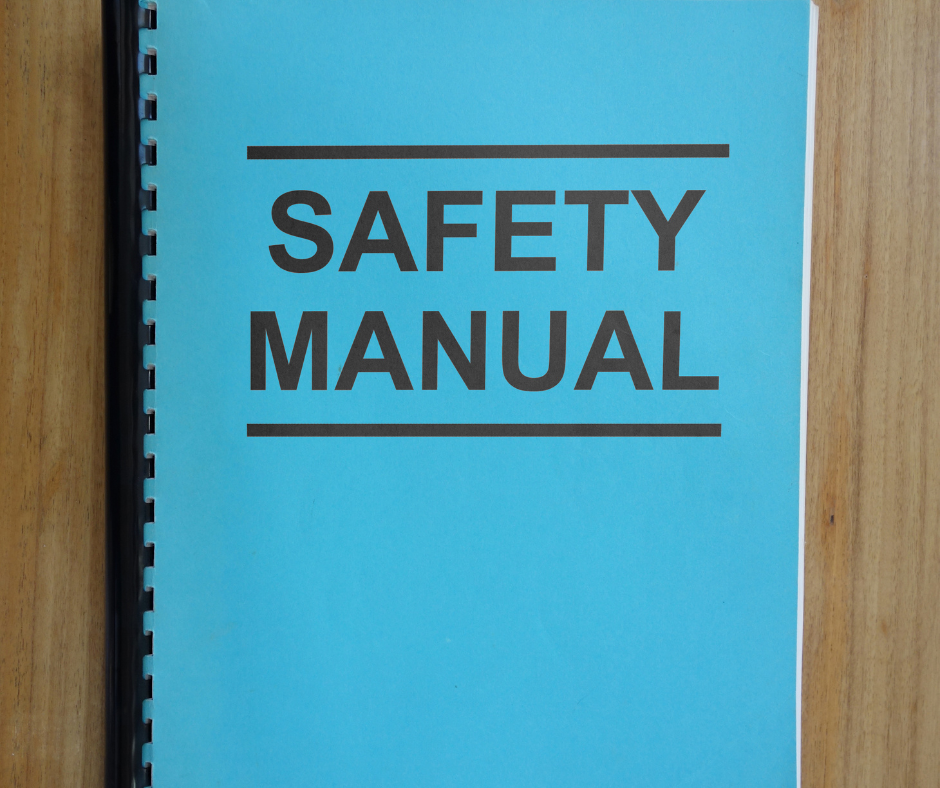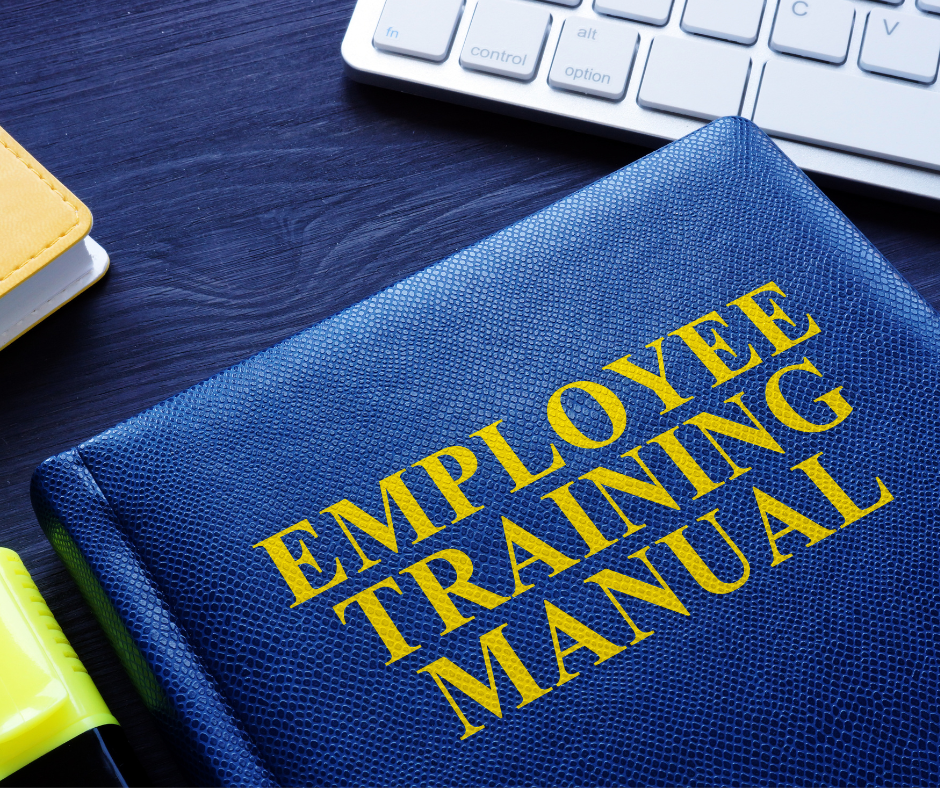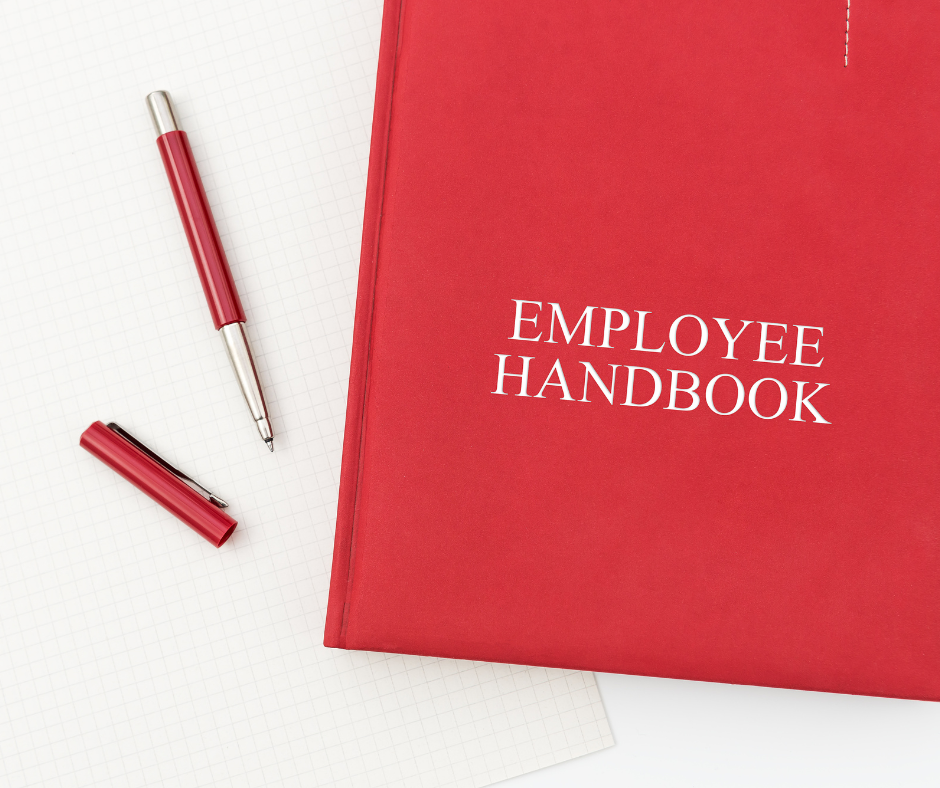
Key Takeaways:
- Employee handbooks are important for animal production companies as they serve as a guide to company policies and procedures, occupational health and safety practices, animal welfare and handling guidelines, and standard operating procedures for animal production. They help ensure consistency in employee behavior and minimize risks associated with animal production.
- The contents of an employee handbook should be comprehensive but concise, covering all important topics relevant to the company and its employees. This applies to both animal and crop production companies.
- Implementation of an employee handbook involves communication and training of policies, monitoring and enforcing compliance, and updating and revising as needed. A well-implemented employee handbook can contribute to a positive work culture and better employee retention.
- The benefits of an employee handbook for animal production companies include improved employee performance and productivity, reduced risks associated with animal production, enhanced compliance with regulations and industry standards, and minimized legal disputes.
Are you looking for guidance in creating a safe and efficient work environment for your animal production company? This article will provide tips on how to make an effective employee handbook!

Importance of Employee Handbooks in Animal Production Companies
Employee handbooks play a crucial role in the smooth and efficient functioning of animal production companies. These handbooks ensure that employees understand the company policies and procedures, which in turn leads to better work ethics and improved productivity. Moreover, the handbooks provide a clear understanding of the company’s culture, code of conduct, and expectations from the employees. Having an employee handbook is especially important for animal production companies as it ensures that the employees understand the safety measures required to handle the animals and follow the hygiene protocols. Additionally, it helps to prevent any misunderstandings and conflicts between the employer and the employees by providing clarity on the responsibilities and benefits of both parties. A unique detail to consider is that employee handbooks are not only beneficial to the employees but are also advantageous to the company as it provides legal protection if a dispute arises. Furthermore, for companies that operate in multiple locations, a standardized employee handbook ensures that all employees are aware of the same protocols and procedures. Pro Tip: Regular updates are essential to keep the handbooks relevant and effective. Employee handbooks for animal production companies should also include proper training on animal welfare standards and handling techniques.
Keywords: Employee Handbooks, Animal Production Companies, Safety Measures, Hygiene Protocols, Legal Protection, Standardized Protocols, Regular Updates, Training on Animal Welfare Standards, Handling Techniques.
Contents of Employee Handbook
The employee handbook in animal production companies is important. To understand it better, we must examine sub-sections. These include:
- Company policies and procedures
- OHS practices
- Animal welfare/handling guidelines
- SOPs for animal production
This section will give you the insights you need.
Company Policies and Procedures
This section outlines the organization’s operational guidelines and regulations that govern the employees’ conduct in the workplace. These policies and procedures are embedded in the company’s culture and prioritize compliance with industry standards and safety protocols for both employees and production processes. Employees must familiarize themselves with these policies to guarantee effective communication, proficiency, and accountability when executing their duties. Failure to adhere to these regulations may result in disciplinary measures or termination.
It is critical that employees understand what is expected of them in terms of professional behavior, performance, attendance, ethical considerations, safety protocols, and security requirements. The policies cover a wide range of topics such as anti-discrimination rules, employee benefits eligibility criteria, grievance processes, illness reporting guidelines, performance evaluation criteria, time off policies among others. Therefore, all employees must review and acknowledge receipt of the handbook upon onboarding. Since companies’ personnel policies significantly impact an individual’s work-life experience positively or negatively, it is crucial that animal production companies adopt progressive HR practices that prioritize their employees’ well-being. A prime example would be Wolfgang Puck Catering emphasizing on transparency while outlining company policies to give clarity on compensation packages and leave days management which fosters trust between employers and their teams while promoting a positive work environment. Remember, in the animal production industry, safety isn’t just a suggestion – it’s moooo-ving day-to-day reality.
Occupational Health and Safety Practices
The efficient management of employee well-being and safety at animal production companies is crucial. It involves implementing various occupational health and safety practices to prevent or minimize workplace injuries, illnesses, and hazards. Protocols for safe handling of equipment, animal care, chemical usage, reporting incidents and emergencies among others must be enforced. Employees must be trained and educated on these procedures to ensure compliance. Notably, promoting a safety culture by creating awareness via signage displays, posters around the work environment can boost employee participation. Consistent training evaluation aimed at improving their knowledge and understanding of the subject matter is essential in upholding safety standards. Adopting occupational health practices ensures mitigated injury risks to employees resulting in fewer lost working days but increased productivity levels for your business. Implementing successful occupational health systems guarantees an optimal workplace environment conducive to promoting employee success within a safe work environment. Paws for a moment and make sure to follow these guidelines to prevent any animal misconduct in the workplace.
Animal Welfare and Handling Guidelines
Promoting Ethical Treatment and Handling of Animals Guidelines for the welfare and handling of animals in animal production companies are crucial to promote ethical treatment. These guidelines ensure that animals receive proper care, nutrition, and a habitat that’s conducive to their growth and development. The guidelines also dictate protocols for ensuring the safety of animals during transportation and handling. Animal Care Animal welfare begins with providing them with access to appropriate food, water, shelter, and healthcare. Animal agriculture firms must ensure that animal caretakers have sufficient knowledge on how to handle sick animals, avoid injuries, dangerous situations and routine inspection programs that guarantee continuous wellness among the livestock. Minimize Stress Animal production companies should take the necessary measures to minimize stress on animals, including training employees on low-stress handling techniques. These include providing adequate space during transportation, preventing overcrowding in barns or enclosures while optimizing the airflow to reduce respiratory ailments due to dust or infectious pathogens such as mycotoxins. Proactive Cultural Transformation
One way of impacting the company positively is by actively encouraging cultural transformation through societal change campaigns in terms of animal welfare practices maintenance. This has a great impact on compliance by layering ethical concerns into all facets of operations from suppliers to retailers.
Effective Crisis Management Unforeseen crisis may occur, thus planning systems before guarantees a quick response time during disasters such as fire breakout. The plan details steps in event identification regarding who will initiate the emergency procedures take action-based planning preserving life safety for all workers present. Don’t worry, the standard operating procedures for animal production aren’t as complicated as figuring out the personality of a cat.
Standard Operating Procedures for Animal Production
Operating Procedures for Animal Production is an essential part of any animal production company’s employee handbook. It outlines the standardized process to deal with emergencies, regulate hygiene practices and ensure smooth workflow.
A 3-step guide for Standard Operating Procedures for Animal Production:
- Develop a comprehensive set of regulations that are specific to the animal industry.
- Create a detailed plan and procedure manual tailored to the animal production industry.
- Maintain regular updates on procedures and ensure all employees are trained on SOPs.
In addition, the manual is a crucial instructional tool that enables managers to regulate their teams effectively. The guide highlights essential information of biosecurity protocols, cleaning requirements of animal housing facilities, and critical emergency response procedures. To illustrate the importance of such SOPs, let us consider a true story. A chicken processing factory faced a severe crisis when one of its workers broke established procedure guidelines. The worker forgot to clean and sanitize a machine after working with infected chickens. Unfortunately, this contaminated several batches of chicken before they were recalled due to customer complaints. The implementation of well-defined SOPs in such situations may have prevented issues like these from happening.
Animal production companies must strive to maintain stricter standards in sanitization, quality control measures, device maintenance checks routine inspection practices. The lack of standard operating procedures can put both animals’ health and human health at risk while putting animal products’ overall quality at risk.
Implementing employee handbooks is like herding cats, but with more paperwork.

Implementation of Employee Handbooks
For animal production companies, to make sure employees are following policies and procedures, create an employee handbook. With communication and training, future clashes can be prevented. Monitoring and enforcement assists in discovering and solving any difficulties. Keep the handbook regularly updated and revised, so your staff stay informed and obey company policies.
Communication and Training of Handbook Policies
The dissemination and instruction of handbook regulations to employees play a vital role in ensuring organizational compliance. Clear communication from management, including regular training sessions, fosters employee comprehension and engagement with company policies. A comprehensive approach may include various training methods such as web-based or on-site training programs and interactive seminars that emphasize the importance of employee compliance.
It is essential to tailor training programs to specific roles within the organization, providing industry-specific examples that relate to the unique work environment of each position. Utilize consistent communication channels for delivering policy updates and expectations, such as company-wide emails or weekly meetings.
Proactively engaging employees in frank discussions about policy gaps or delays can create an inclusive culture of constructive feedback and collaboration while increasing motivation. In this way, companies cultivate a productive work environment resulting from employee familiarity with standard practices, reduced risk of non-compliance issues, and increased confidence in operations. Pro Tip: Consider personalizing learning experiences beyond general requirements through one-on-one meetings or mentorship opportunities. This promotes greater clarity surrounding the purpose behind policies by allowing employees to ask contextual questions relevant to their roles. Making sure employees actually read the handbook is like herding cats, but with less scratching and more boredom.
Monitoring and Enforcing Handbook Compliance
To maintain Handbook Adherence, it is crucial to implement strategies that will allow for Observation and Enforcement of the guidelines set in place. This helps not only ensure compliance from employees but also guarantees that the company adheres to its obligations while avoiding any liabilities. The following strategies must be implemented:
- Routinely Review Handbooks: Regularly review employee handbooks, ensuring changes are accurately reflected on printed copies, intranet pages, and hard drives.
- Implement Record Requirements: Use employment checklists or similar records to confirm delivery and acceptance of Employee Manuals for all new hires in natural resources and mining companies.
- Conduct Training Sessions: Organize periodic training sessions where employees are reminded about the policies of their Handbooks, including disciplinary actions if deviated away from them.
- Develop an Audit Checklist: Create a flexible verification tool that can offer managers valuable insight into which areas need improvements.
Aside from these strategies, it is equally important always to remind senior executives and employee management teams of the importance of complying with Employee Handbook policies. Companies in industries such as mining, quarrying, and oil and gas extraction can benefit from having specialized employee handbooks tailored to their specific needs. Companies should invest adequate resources and effort in monitoring and enforcing these adherence activities to avoid lawsuits or any other legal problems due to non-compliance.\n Updating an employee handbook? It’s like trying to teach an old dog new tricks, but with legal consequences.
Updating and Revising Employee Handbook as Needed
The process of keeping the employee handbook relevant and effective is crucial for animal production companies. Ensuring that the handbook is updated and revised as per the current needs is necessary to communicate accurate information to the employees. Employers must periodically review and assess their handbook to keep it up-to-date.
To start with, employers should identify what aspects of the handbook require updating and then initiate changes in a structured manner. They must ensure that all employees are aware of any new policies or guidelines added to the handbook. Furthermore, employers can seek feedback from their employees on current policies listed in the manual; this helps in identifying areas where revisions might be required. Employers may also choose to conduct annual training sessions for their employees; this will help them understand any new policies or procedures implemented on-ground. Companies may also opt for continuous updates in digital formats, like online portals or social media pages.
In one instance, a large-scale animal production company revised its employee handbook to include safety protocols issued by relevant authorities during covid-19 times. The management trained all their staff on new protocols through online meetings, ensuring compliance with mandates promptly.

Benefits of Employee Handbooks for Animal Production Companies
To maximize productivity and minimize misunderstandings in animal production companies, Employee Handbooks are crucial. These Handbooks offer guidance and guidelines on company-specific policies, procedures, and benefits. They also provide legal protection, ensuring compliance with state and federal laws. The following are some key benefits of using Employee Handbooks:
- Improves Communication and Consistency: Employee Handbooks ensure that all employees have a clear understanding of company policies and guidelines. This transparency reduces confusion and enhances consistency among staff.
- Reduces Legal Risks: Employee Handbooks protect companies from potential legal issues by clearly stating expectations and regulations. They can also include employment agreements, workplace safety guidelines, and a code of conduct, among other things.
- Enhances Employee Satisfaction: Creating a positive work environment is crucial. Employee Handbooks can outline opportunities, benefits, policies, and procedures that instill confidence in employees, leading to job satisfaction and retention.
Moreover, incorporating handbooks is a systematic approach to human resource management, increasing the HR team’s efficiency and providing cost savings. Animal production companies have been subject to lawsuits and legal issues, leading to a significant impact on their operations. An example is Tyson Foods, Inc., which faced a fine of $263,498 following worker fatalities in their poultry plant. Companies benefit from implementing Employee Handbooks to minimize such legal risks, just like mining (except oil and gas) companies do.
Some Facts About Employee Handbooks for Animal Production Companies:
- Employee handbooks for animal production companies should include policies on animal welfare, workplace safety, and compliance with industry regulations. (Source: National Pork Board)
- The handbook should also outline the company’s expectations for conduct and performance, as well as benefits and compensation. (Source: The Poultry Site)
- Employee handbooks should be reviewed and updated regularly to ensure compliance with changing laws and regulations. (Source: Farm Journal)
- Providing employees with a clear and comprehensive handbook can help prevent disputes and improve workplace communication. (Source: Beef Magazine)
- A well-written employee handbook can also help attract and retain top talent by showcasing the company’s commitment to its employees. (Source: Pork Business)
FAQs about Employee Handbooks For Animal Production Companies
What are Employee Handbooks for Animal Production Companies?
Employee handbooks for animal production companies are documents that outline important policies, procedures, and expectations for employees of animal production companies. They typically cover topics such as workplace safety, employee benefits, and company culture. These handbooks not only provide clear guidance for employees, but they also protect the interests of the company by establishing clear boundaries and expectations.
Are Employee Handbooks for Animal Production Companies necessary?
Yes. Employee handbooks for animal production companies are necessary. They provide a clear set of expectations for employees, help ensure workplace safety, and protect the company legally by outlining policies and procedures. Additionally, having a handbook can help new hires acclimate to the company culture and procedures more quickly, which can help them become productive members of the team faster.
What should be included in an Employee Handbook for an Animal Production Company?
An employee handbooks for animal production companies should include policies and procedures related to workplace safety, employee benefits, company culture, and disciplinary action. Other important topics to cover include job descriptions, work schedules, and compensation. It’s also important to include information about company values and mission, as well as any legal obligations the company has to its employees.
How should Employee Handbooks for Animal Production Companies be distributed?
Employee handbooks for animal production companies should be distributed to all employees, including new hires, as part of the onboarding process. It’s important to obtain a signed acknowledgement from each employee that they have received, read, and understand the handbook. Companies should also make sure to update the handbook regularly to reflect changes in policies or procedures.
Can the contents of an Employee Handbook ever be changed?
Yes. The contents of an employee handbooks can be changed. As policies and procedures change, it’s important to update the handbook to reflect these changes. Companies should establish a process for reviewing and updating the handbook regularly. Any updates should be communicated to employees and a new acknowledgement should be signed to confirm receipt and understanding.
What are the benefits of having an Employee Handbook for an Animal Production Company?
The benefits of having an employee handbooks for animal production company include providing clear guidance and expectations to employees, ensuring workplace safety, protecting the company legally, helping new hires acclimate to the company culture and procedures more quickly, and establishing a clear set of policies and procedures. Additionally, having a handbook promotes consistency throughout the company by ensuring that all employees are aware of the same policies and procedures.